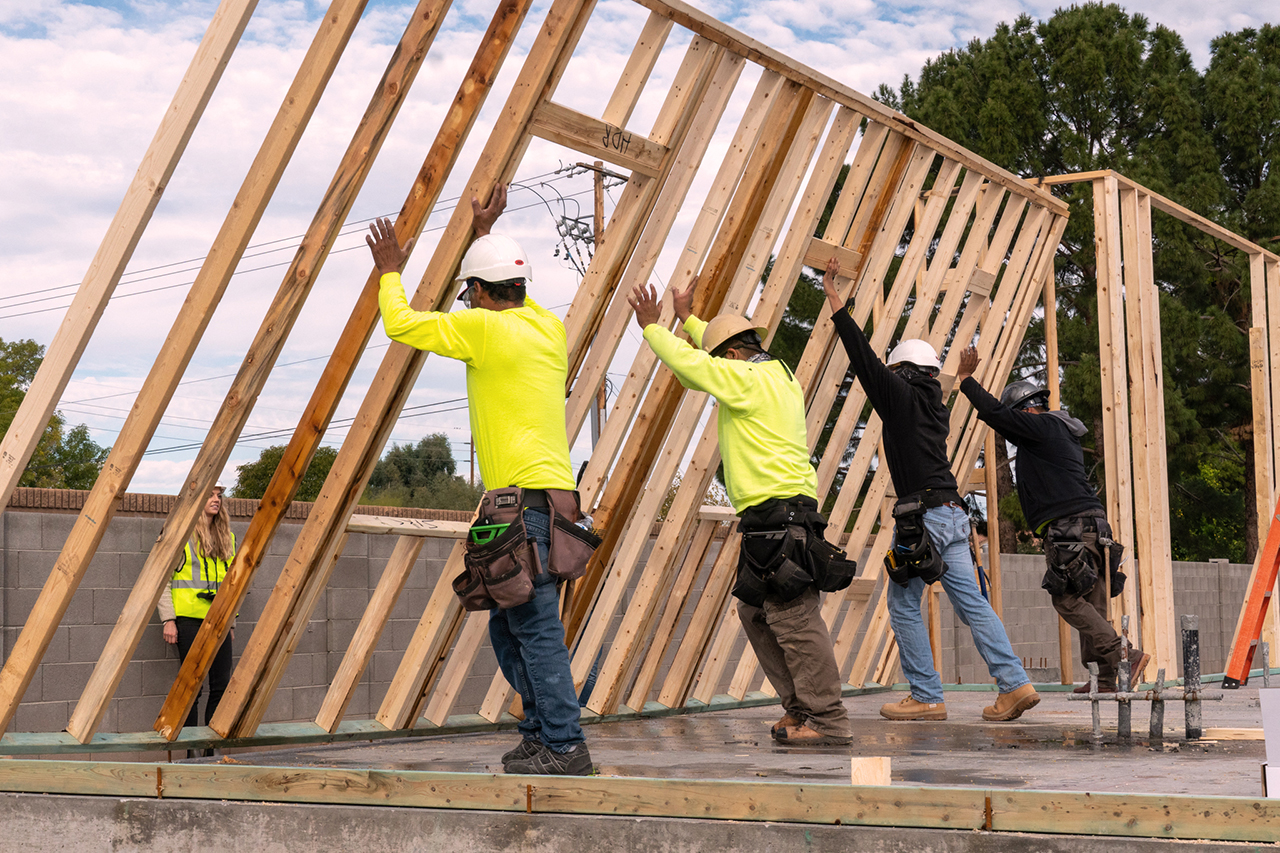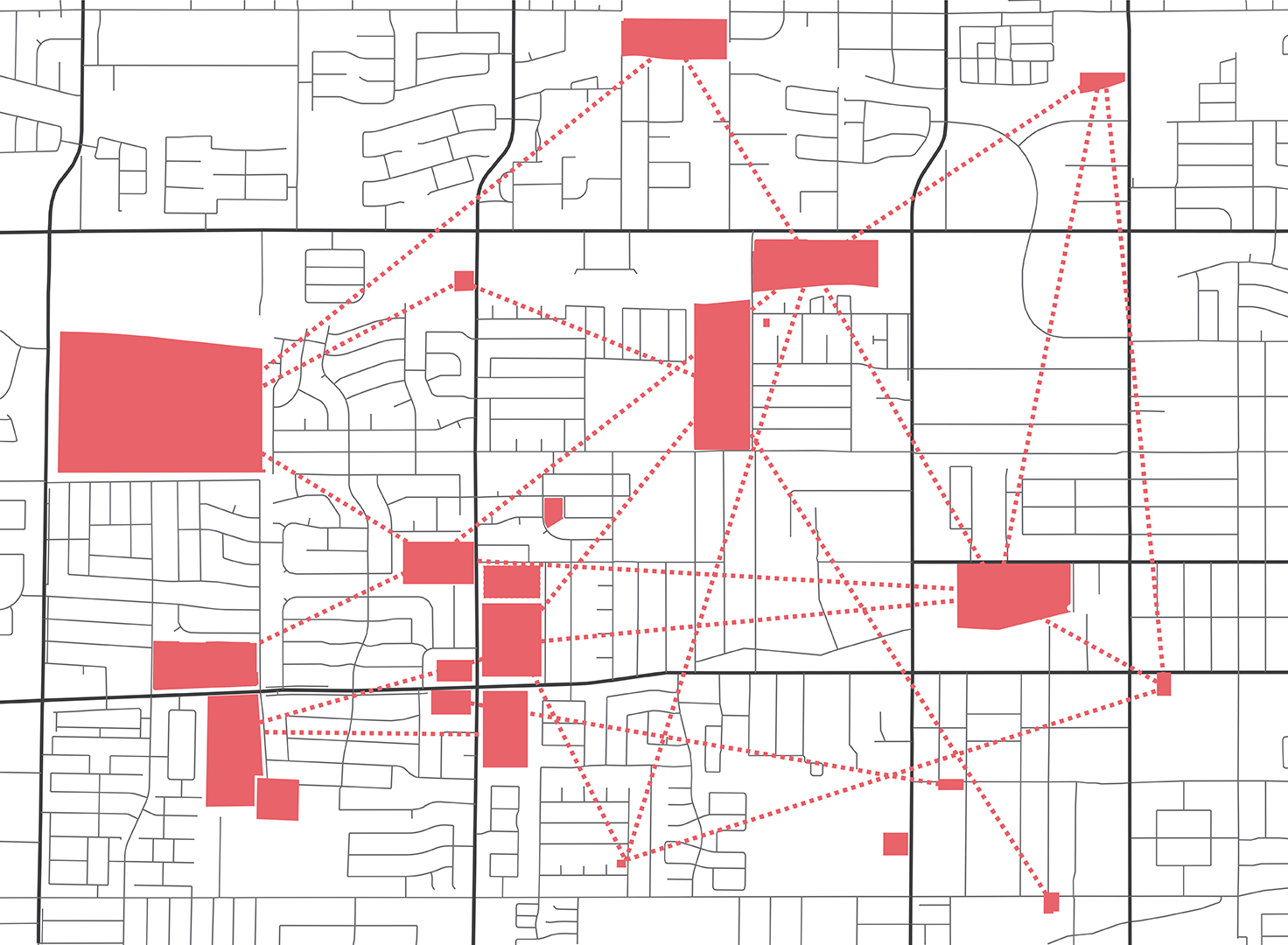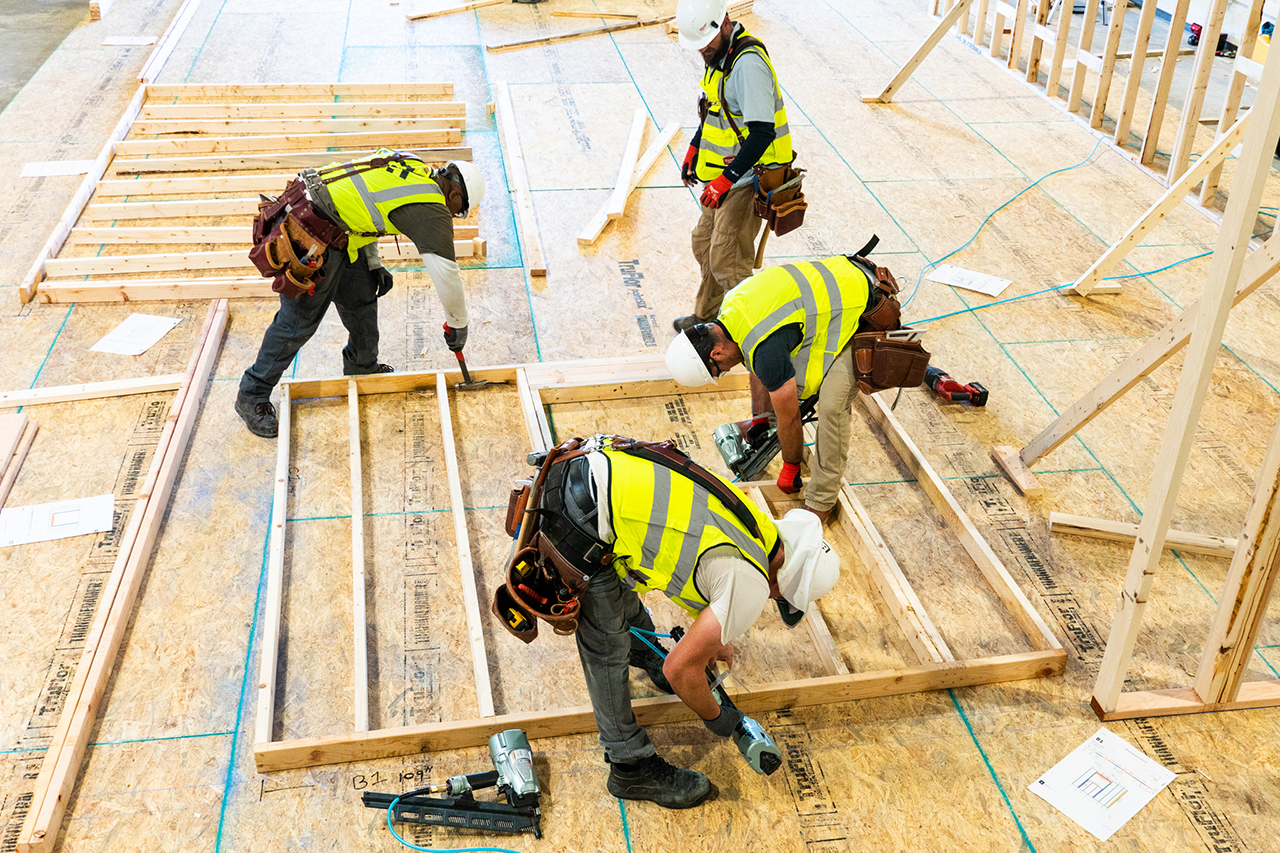Labor
Our cities and homes depend on their builders. But the construction industry suffers from both declining productivity and a shortage of labor, complicated by low wages, narrow specialization, and few opportunities to learn and cross-leverage skills. How can we reimagine the construction trade to more efficiently match workers with projects and skills? How can we use design to create a community for the future construction trade?

Wall assembly, Mosaic.us
Mosaic Networks
Mosaic.us is a technology startup using machine learning and other techniques to simplify tasks and thus accelerate construction. In doing so, it decreases the reliance on worker specialization and increases flexibility by cross-training crew across multiple domains.
Our project began as an exploration of city-wide construction dynamics and processes to understand how best to leverage construction workers’ cooperation and skillbuilding. By mapping networks of workers against networks of existing and potential construction sites, we aim to identify optimal hubs for the worker community.
At regional scale, increased worker flexibility allows us to create effective teams from a larger pool of candidates, allowing Mosaic.us to deploy teams with shorter hours, less travel time, and other parameters. These benefits trickle down to lower operations costs, higher retention rates, increased flexibility in commuting and scheduling and a new more inclusive camaraderie around construction work.

Disparate vacant lots in Phoenix, AZ become network of construction sites
Mosaic Hub
Using worksheets and “builder’s yards” as the basis of a collective learning environment, Mosaic.us can train its workers as they go. Leveraging this cross-training, workers will become less dependent on the construction cycle, and can partake in a broader range of activities across different sites as they see fit.

Assembly in Mosaic Hub, Mosaic.us
